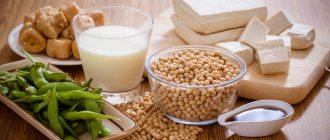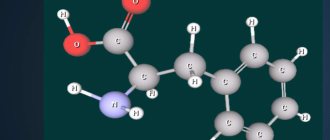Want to know what nonessential and essential amino acids are? Then this is the place for you. Read the article to the end, and you will find out what amino acids are, why amino acids are essential and non-essential, what is the human need for essential amino acids, and from what foods can they be obtained. Galina Baeva and essential and essential amino acids are with you.
Amino acids are chemical compounds that have an acidic carboxyl tail C-O-OH and an amino group -NH2, which necessarily includes nitrogen.
What are amino acids
The clue to their structure is in the name. The word “amino” indicates the presence of an amino group – NH2, and “acid” – the presence of an acidic carboxyl group – COOH. In other words, this group of compounds consists of a carboxylic acid, one of the hydrogen atoms of which is replaced by an amino group.
The formula is not so simple: between the amino group and the carboxyl group there is a carbon skeleton of the amino acid, which differs in functional groups. Therefore, the structure of amino acids is different, as are their formulas. The presence of acidic and basic properties makes them amphoteric (neutral) compounds. Acidic amino acids are not quite the right expression, and they have a sweetish taste.
These are crystalline substances that melt at high temperatures (+250°C) and are highly soluble in water, but retain their composition in most organic solvents. Most substances in this group have a sweet taste.
They are capable of forming salts and esters, but the main chemical property of amino acids is the ability to create protein macromolecules. By connecting with each other, amino acids will make peptides (pieces of the protein skeleton). Two acids form a dipeptide:
Three assemble into a tripeptide, four form a tetrapeptide, and so the assembly of a protein macromolecule gradually proceeds. The answer to why amino acids are needed lies in the creation of a huge variety of proteins. They are monomers from which a large polymeric protein thread with its own formula and properties is built.
Let's imagine an amino acid (AMA) in the form of a bead. We string different beads onto a long thread. This is the primary structure of the protein. Then we fold this thread in a zigzag pattern so that some of the beads touch each other. This is how the secondary structure is obtained. Then we twist this thread several more times to form a ball, and we reach the tertiary structure. Several ball beads joined together form a quaternary structure. Each protein has a complex structure, but thanks to the structure and properties of amino acids, special configurations of different protein macromolecules are created with their own structure and unique formula.
Scientists have counted 200 different amino acids that are found in the cells and tissues of different organisms. They were found in free and bound forms. Some of them are isolated and unique: they are found in individual organisms.
Optimal amino acid ratio
Essential and non-essential amino acids must be balanced in the body.
When there are too many of these or those, unpleasant symptoms may occur:
- gastrointestinal disorders such as bloating;
- stomach ache;
- diarrhea;
- accumulation of uric acid, which leads to inflammation in the joints;
- drop in blood pressure;
- kidney dysfunction.
The physiological need of a person for amino acids is variable and depends on the activity of the processes of protein catabolism and anabolism.
The recommended daily intake of amino acids depends on the person, his activities, and lifestyle. For example, athletes, active people, those who are sick or recovering from surgery need more of them. In these cases, a balanced diet provides optimal doses of amino acids, promotes healing, and reduces muscle loss.
Providing the body with essential amino acids and protein depends on the quality and diet. Diets containing sufficient protein will always have the optimal ratio of amino acids. The diet should be varied to meet the body's need for amino acids.
Essential and non-essential amino acids
Of the wide variety, only 20 amino acids have the ability to form proteins. AMAs are divided into α-, β-, γ-, δ- and ω-amino acids, which have different formulas and chemical properties. The most important are alpha amino acids, from which most proteins are built.
There is a classification of amino acids that divides this group into hydrophilic (having the property of interacting with water) and hydrophobic amino acids (trying to avoid contact with water). But there is also a classification that is based on their intake into the body: types of amino acids are divided into replaceable and essential.
Irreplaceable
Essential amino acids include compounds that the body is not able to synthesize in the required quantities. This is the following complex of amino acids:
- leucine;
- valine;
- lysine;
- methionine;
- threonine;
- tryptophan;
- phenylalanine;
- histidine
Each of them has its own formula, properties and plays a specific role during metabolic processes. There is a group of conditionally essential amino acids that the body synthesizes in quantities that are insufficient for it. These are tyrosine and cysteine.
Replaceable
The body synthesizes this group of AMK independently. The best amino acids are produced within the body and do not need to be constantly supplied from the outside. These include:
- arginine;
- alanine;
- aspargine;
- glutamine;
- glycine;
- carnitine;
- ornithine;
- proline;
- serine;
- taurine
Each of them plays an important role in the body. It has a structure (formula) that determines its properties. But in general, they participate in protein-carbohydrate metabolism, in the synthesis of substances needed by the body. Amino acids make up hormones, vitamins, alkaloids, pigments and other compounds.
Amino acid synthesis
There are 3 pathways for amino acid synthesis:
- From glucose and its products in the Krebs Cycle
- From α-keto acid
- From other amino acids, both non-essential and essential.
Glucose, as well as its derivatives: 3-phosphoglycerate, pyruvate (pyruvic acid), oxalacetate (oxaloacetic acid) provide the carbon skeleton for the synthesis of a number of amino acids. The amine head is supplied by other amino acids, most often glutamate. The reactions are called transamination because the amine head is transferred from one amino acid to the carbon skeleton, resulting in the formation of another amino acid.
From glucose, through a series of transformations serine , and from it glycine . It is clear why serine is a completely replaceable amino acid, and glycine is a conditionally replaceable amino acid, because serine is formed from glucose, which is abundant, and glycine is formed from serine through additional energy-consuming reactions.
From pyruvate, taking the amine head from glutamate with the help of the enzyme alanine aminotransferase (ALT), alanine , another completely non-essential amino acid.
From oxalacetate, also taking the amine head from glutamate with the help of the enzyme aspartate aminotransferase (AST), completely replaceable aspartate , and from it asparagine .
The next synthesis route is from α-keto acid, which is the source of the carbon skeleton. The reaction most often involved is α-ketoglutarate. The amine head is supplied by the ammonia molecule NH3. This reaction is called reductive amination. In this way, completely replaceable glutamate is formed, and from it conditionally replaceable glutamine is synthesized, and then through a series of transformations - proline and hydroxyproline .
Another synthesis route is from essential amino acids. Since the resource of essential amino acids is limited by nutrition, conditionally essential amino acids are synthesized. From essential phenylalanine, nonessential tyrosine , and from essential methionine and nonessential serine, nonessential cysteine is synthesized.
The conditionally essential amino acid arginine is formed in the body in the process of neutralizing ammonia NH3, which through a series of transformations joins the non-proteinogenic amino acid ornithine and then, through another series of transformations, involving another amino acid - aspartate, arginine is obtained. So, the source of arginine is the two amino acids ornithine and aspartate, as well as ammonia, a toxic substance formed during the breakdown of other amino acids. The funny thing is that ornithine itself is formed from arginine, i.e. you can't do without an external source.
The conditionally essential amino acid histidine is formed during a complex reaction. The initial preparations for its carbon skeleton are glucose, which turns into a five-membered carbon - ribose, and an ATP molecule. The amine head is provided by non-essential glutamate. The reaction cascade consists of 9 steps. It is not surprising that the body prefers to obtain histidine in finished form from food.
Amino acids in food
To avoid a deficiency of compounds with important properties, they must be obtained externally through food. The source of amino acids is the “food basket” with a set of protein substances.
"Essential amino acids: list in food"
| № | AMK | products |
| irreplaceable | ||
| 1. | leucine | dairy products, oats, wheat germ, meat |
| 2. | valine | meat, mushrooms, grains and dairy products, walnuts |
| 3. | lysine | legumes and dairy products, poultry, fish, peanuts, wheat germ |
| 4. | methionine | legume products, meat, vegetables, cottage cheese, peanuts |
| 5. | threonine | dairy products, meat, eggs, peas |
| 6. | tryptophan | turkey meat, dairy products, eggs, nuts, seeds, rice, potatoes |
| 7. | phenylalanine | meat and dairy products, chicken, oats, wheat germ |
| 8. | histidine | meat, dairy products, wheat germ |
| conditionally irreplaceable | ||
| 9. | tyrosine | dairy and meat products, fish, almonds, bananas |
| 10. | cysteine | fish, meat, soy products, wheat, oats, chicken fillet, garlic |
Natural Sources of Amino Acids
- Alanine: beef, pork, eggs, milk, rice, soy, oats, corn
- Arginine can be obtained from meat, fish, nuts, soy, oats, wheat, rice
- Aspartic acid and asparagine: eggs, meat, peanuts, potatoes, coconut
- Valine is an essential amino acid, found in large quantities in soy, meat, fish, eggs, milk, hazelnuts, oats, rice.
- Histidine. In the human body, histidine is synthesized in limited quantities. It is found in bananas, fish, beef
- Glycine. Sources include beef, liver, peanuts, oats
- Glutamic acid and glutamine are found in wheat, rye, milk, potatoes, walnuts, meat, soybeans
- Isoleucine is an essential amino acid. Sources: soy, meat, fish, eggs, milk, hazelnuts
- Leucine is a proteinogenic essential amino acid. Sources: soy, meat, fish, oats, eggs, milk, hazelnuts, corn, millet
- Lysine is an essential amino acid. Vegetable proteins contain little lysine. Sources: soy, meat, fish, eggs, milk, lentils, wheat
- Methionine is an essential proteinogenic amino acid. Sources: meat, fish, liver, eggs, corn
- Proline is an essential proteinogenic amino acid. Sources: milk, wheat, fruits, found in large quantities in fruit juices (up to 2.5 g/l of orange juice)
- Serine is a proteinogenic essential amino acid. Sources: milk, eggs, oats, corn
- Tyrosine is a proteinogenic essential amino acid. Sources: milk, peas, eggs, peanuts, beans.
- Threonine is an essential proteinogenic amino acid, the need for which is especially great in children. Sources: milk, eggs, peas, wheat, beef, fish
- Tryptophan is an essential amino acid. There is little tryptophan in plant proteins. Sources: soy, meat (especially liver), fish, eggs, milk
- Phenylalanine is an essential proteinogenic amino acid. Sources: soy, meat, fish, eggs, milk, hazelnuts, peanuts,
- Cysteine, cystine is an essential proteinogenic amino acid. Sources: eggs, oats, corn
Biological value of food products and the content of essential amino acids in them (mg\100 g)
When entering the gastrointestinal tract, proteins break down into their component parts and are absorbed into the blood in the form of separate small fragments. In the body, individual amino acids into which food proteins are broken down form their own proteins. Proteins in the human body differ significantly in composition from food proteins, which is why food must be varied in order to satisfy the body's need for all nutrients.
Amino acid composition of some simple proteins
Egg albumin and milk casein are considered the most balanced proteins in terms of amino acid composition, but how different their composition is from the composition of various proteins in the human body. So for the synthesis of thymus protein and blood globulin there is not enough tryptophan and valine contained in eggs and milk, for the synthesis of insulin there is not enough phenylalanine and valine, for the formation of blood albumin there is not enough lysine and phenylalanine and again valine. This means that when consuming eggs and milk alone as sources of essential amino acids, the body will still not receive enough of them, and in order to make up for the deficiency it will begin to destroy its own proteins, i.e. devour itself, which will inevitably lead to a decrease in immunity, a decrease in muscle mass, and in the long term - to premature aging.
Video 3 min
Did you like the article? Leave a comment and share information on social networks. Galina Baeva.
Amino acids in the human body
Natural amino acids are 200 essential compounds and 200 unique formulas. They are found in free or bound form. When AMKs are synthesized independently, there are no problems. The main attention should be paid to the essential components of protein molecules, which must be obtained from the outside. They have their own formulas and basic properties needed by the body:
- improvement of brain function due to the ability to transmit nerve impulses (valine, leucine, tryptophan);
- accumulation of calcium (lysine),
- increased lipid metabolism (methionine);
- normalization of central nervous system activity (isoleucine, methionine, threonine);
- improvement of appetite (phenylalanine);
- decreased pain threshold (phenylalanine).
There are 8 essential BUNs, but control of three of them is important: valine, leucine and isoleucine (BCCA). Their formula has branched side chains. If BCCA deficiency does not occur, then the need for other amino acids will be satisfied.
Signs of deficiency and excess of amino acids
Lack or excess of BUN affects the general condition of the body. With their deficiency, the following is observed:
- poor appetite;
- state of drowsiness and weakness;
- inhibition of growth and development;
- hair loss;
- poor skin condition;
- anemia;
- weak immune defense.
The properties of AMK are such that their excess also affects health:
- With a high tyrosine content, the balance in the thyroid gland changes, and hypertension develops.
- With an excess of histidine, joint diseases and aortic aneurysm are possible. Early gray hair occurs.
- With a high concentration of methionine, there is a high risk of developing a stroke or heart attack.
Such problems are possible due to a lack of a number of vitamins (A, C, group B) and selenium. In their presence, the excess amino acid content is neutralized.
BUN balance is associated with proper nutrition and health. In the presence of chronic pathologies of the liver, gastrointestinal tract, or lack of certain enzymes, the content of the amount of AMK becomes uncontrollable.
Daily requirement for amino acids
Each amino acid with its individual formula and properties is needed by the body in certain quantities. Calculating the daily norm of the set needed by the body is difficult, since it depends on its content in 1 g of protein. The total requirement for essential amino acids is 0.5-2 g per day.
If the daily protein intake is approximately 120 g, then a person receives:
- 8.4 g leucine;
- 4.8 g isoleucine;
- 6 g valine.
These are the same BCAAs that cover the deficiency of essential amino acids. The daily norm of required protein for men is 65-120 g, for women – 60-90 g. Half of this norm comes from animal proteins. Amino acids are part of proteins, so it is possible to calculate in what quantities they enter the body.
Active metabolism of amino acids occurs:
- during the growth of the body;
- during active sports;
- under severe mental and physical stress;
- during illness and during the recovery process.
The rate of absorption of the necessary AMKs depends on individual products or their combination.
The body quickly absorbs egg whites, low-fat cottage cheese, lean meat and fish. Absorption goes well when combining milk with buckwheat porridge and white bread, flour products with meat and cottage cheese. If the body is healthy and protein intake meets the daily requirement, then you don’t have to think about the question of how to properly take amino acids. Most of the necessary protein components are found in meat, milk and eggs. Their correct distribution throughout the day will allow you to saturate the body with the necessary substances with different formulas and with properties important for metabolism.
conclusions
In order for the human body to function normally, the role of amino acids is very important. You can replenish the content of essential amino acids in the body by using dietary supplements. It is very important to use them also for reduction diets and diseases. Such supplements are also useful for those who adhere to a vegetarian lifestyle: they allow the body to receive those necessary substances that are not found in foods of plant origin.
It is also important to make your diet as varied as possible: the more types of food you eat, the more necessary substances you will have at your disposal.
Beneficial properties of amino acids, their effect on the body
The main hereditary material of a cell is DNA, one of the tasks of which is the synthesis of chains of amino acids. Peptide strands are also created in mitochondria (organelles called “little power stations”). Thus, serine and other acids are synthesized in mitochondria.
From them the protein conglomerates needed by the body are built. AMKs build our body by creating muscle mass. They are needed for brain function and help a woman maintain her external beauty. But this is just the tip of the iceberg: the biological role of amino acids is enormous.
Amino acids for athletes
To achieve the desired results in sports, you need to build and strengthen muscle mass. The properties of AMK provide:
- access to the muscles of the building material;
- building muscle proteins;
- rapid redox processes in muscles;
- hormone production;
- acceleration of anabolic processes (renewal of cells and tissues);
- necessary processes for immunity and its growth;
- normalization of protein metabolism;
- burning of adipose tissue.
BCAA amino acids
During training, the body's main source of energy is carbohydrates, but approximately 20% of all energy is obtained by muscles by breaking down proteinogenic amino acids. Isoleucine, valine and leucine (branched chain amino acids) are the main energy providers among amino acids.
These three amino acids are also called muscle amino acids because they are metabolized not by liver cells, but directly by muscles.
Benefits of BCAA Amino Acids
BCAAs (valine, isoleucine and leucine amino acid) help cope with catabolism - the process of protein breakdown in muscle tissue. In addition, BCAAs help stimulate protein synthesis in muscles.
Possessing anabolic and anti-catabolic properties, BSA amino acids promote rapid growth and a significant increase in muscle mass.
When to take BCAA amino acids
It is recommended to take BCAA dietary supplements before and immediately after training; the dosage for a single dose is approximately 5 g.
Pre-workout preparations with an amino acid composition will help slow down the process of muscle breakdown during intense physical exertion and serve as a source of energy for the body.
After exercise, BCAAs help repair muscle tissue and increase insulin production. Insulin helps muscle cells better absorb nutrients.
Limiting amino acids
The presence of limiting amino acids in a particular product does not allow this product to be called complete. The protein of such products is considered inferior, which entails certain difficulties for the synthesis of protein structures in the body. No difficulties arise if one product with limiting essential amino acids is supplemented by another product in which this amino acid is sufficient.
It is even possible to combine products, in each of which one essential amino acid is limiting, and in the other (other) products - another. Thus, they complement each other. Example: consuming together in the diet legumes (lentils, beans, peas), in which the limiting amino acid is methionine, and grains (buckwheat, wheat, rice) with the limiting amino acid lysine.
However, if foods with similar limiting amino acids are eaten, this means a complete deprivation of the body of a component necessary for the construction of body structures. After all, an ideal protein is so called because it contains the amount of one or another essential amino acid necessary for the body.
If any amino acid enters the body in insufficient quantities, this deprives the body of the opportunity to fully renew its structures. When eating animal protein, no problems with limiting amino acids arise. Problems arise only if you switch to only plant foods.
So, from the point of view of the amino acid score, the following should be remembered: legume products (soybeans, beans - exceptions) have a limiting essential amino acid, methionine.
Cereal products contain the limiting essential amino acid lysine.
The combination of cereals and legumes makes it possible to obtain a complete protein containing all the essential amino acids necessary for the body.
Plant and animal protein: which is better?
There is no good or bad protein, the body needs all types in sufficient quantities. By consuming only the protein contained in animal products, a person will experience a deficiency of those beneficial substances contained in plant protein, and vice versa. Not only the ratio of proteins plays a role, the presence of good and bad fats and carbohydrates is also important.
Products that contain beneficial amino acids, but are also high in animal fats, pose a health hazard, especially for those who are watching their weight. The diet should be varied and cover all human nutritional needs.
Amino acids are classified according to the following structural characteristics.
I. Classification according to the relative position of functional groups
Depending on the relative position of the amino and carboxyl groups, amino acids are divided into α-, b-, g-, d-, e-, etc.
The Greek letter at a carbon atom indicates its distance from the carboxyl group.
II. Classification according to the structure of the side radical (functional groups)
Aliphatic amino acids
Monoaminomonocarboxylic acids: glycine, alanine, valine, isoleucine, leucine.
Hydroxymonoaminocarboxylic acids (contain an OH group): serine, threonine.
Monoaminodicarboxylic acids (contain a COOH group): aspartate, glutamate (due to the second carboxyl group they carry a negative charge in the solution).
Amides of monoaminodicarboxylic acids (contain an NH2CO group): asparagine, glutamine.
Diaminomonocarboxylic acids (contain an NH2 group): lysine, arginine (due to the second amino group they carry a positive charge in the solution).
Sulfur-containing acids: cysteine, methionine.
Aromatic amino acids : phenylalanine, tyrosine, tryptophan.
Heterocyclic amino acids : tryptophan, histidine, proline.
Imino acids : proline.
The most important α-amino acids
III. Classification according to the polarity of the side radical (according to Lehninger)
There are four classes of amino acids containing the following types of radicals.
Hydrophobic amino acids are located inside the protein molecule, while hydrophilic amino acids are located on the outer surface, which makes protein molecules hydrophilic and highly soluble in water.
Thanks to this property, proteins bind water well, holding fluid in the blood, in the intercellular space and inside cells.
1. Non-polar (hydrophobic)
Non-polar (hydrophobic) include amino acids with non-polar R-groups and one sulfur-containing amino acid:
- aliphatic: alanine, valine, leucine, isoleucine
- aromatic: phenylalanine, tryptophan.
- sulfur-containing: methionine
- imino acid: proline.
2. Polar uncharged
Polar uncharged amino acids, compared to non-polar ones, are better soluble in water and are more hydrophilic, since their functional groups form hydrogen bonds with water molecules.
These include amino acids containing:
- polar OH group (hydroxy amino acids): serine, threonine and tyrosine
— HS group: cysteine
- amide group: glutamine, asparagine
— and glycine (the R-group of glycine, represented by one hydrogen atom, is too small to compensate for the strong polarity of the a-amino group and the a-carboxyl group).
3. Negatively charged at pH-7 (acidic)
Aspartic and glutamic acids are negatively charged amino acids.
They contain two carboxyl and one amino groups, so in the ionized state their molecules will have a total negative charge:
4. Positively charged at pH-7 (basic)
Positively charged amino acids include lysine, histidine and arginine.
In ionized form they have a net positive charge:
Depending on the nature of the radicals, natural amino acids are also divided into neutral, acidic and basic. Neutral includes non-polar and polar uncharged, acidic - negatively charged, basic - positively charged.
IV. Classification according to acid-base properties
Depending on the number of functional groups, acidic, neutral and basic amino acids are distinguished.
Basic
Amino acids in which the number of amino groups exceeds the number of carboxyl groups are called basic amino acids: lysine, arginine, histidine:
Sour
If amino acids have an excess of acidic groups, they are called acidic amino acids: aspartic and glutamic acids:
All other amino acids are neutral.
V. By the number of functional groups
Amino acids can be divided according to the number of functional groups: monoaminomonocarboxylic, monoaminodicarboxylic, diaminomonocarboxylic:
VI.Biological classification (according to the ability to be synthesized in humans and animals)
Nonessential amino acids - ten of the 20 amino acids that make up proteins can be synthesized in the human body. These include: glycine (glycocol), alanine, serine, cysteine, tyrosine, aspartic and glutamic acids, asparagine, glutamine, proline.
Essential amino acids (8 amino acids) - cannot be synthesized in the body of humans and animals and must be supplied to the body as part of protein foods.
There are eight absolutely essential amino acids: valine, isoleucine, leucine, threonine, methionine, lysine, phenylalanine, tryptophan.
Essential amino acids are often included in food supplements and used as medicines.
Conditionally essential (2 amino acids) - synthesized in the body, but in insufficient quantities, so they must be partially supplied with food. These amino acids are histidine and arginine.
Histidine and arginine are also essential for children.
Both types of amino acids are equally important for humans: non-essential and essential. Most of the amino acids are used to build the body’s own proteins, but without essential amino acids the body cannot exist.
If there is a lack of any amino acids in the human body, the proteins of connective tissue, blood, liver and muscles can be destroyed for a short time, and the “building material” obtained from them - amino acids - is used to maintain the normal functioning of the most important organs - the heart and brain.
Amino acid deficiency leads to poor appetite, retarded growth and development, fatty liver and other severe disorders.
In this case, there is a decrease in appetite, deterioration of skin condition, hair loss, muscle weakness, fatigue, decreased immunity, and anemia.
Excess amino acids can cause the development of serious diseases, especially in children and adolescence. The most toxic are methionine (provokes the risk of heart attack and stroke), tyrosine (can provoke the development of arterial hypertension, lead to disruption of the thyroid gland) and histidine (can contribute to copper deficiency in the body and lead to joint diseases, early gray hair, severe anemia) .
Under conditions of normal functioning of the body, when there is a sufficient amount of vitamins (B6, B12, folic acid) and antioxidants (vitamins A, E, C and selenium), excess amino acids do not harm the body.
Products with a high content of certain essential amino acids
Quality of some food proteins relative to human milk proteins
Amino acids
Amino acid speed What it is? Limiting Amino Acids – Questions and Answers
Amino acid score is an indicator of the completeness of a protein, which is the percentage of a certain essential amino acid in a particular product to a similar amino acid in an artificial ideal protein. In English, the word “score” means count. In the case of an amino acid score, it is a score obtained by dividing the amount of a selected essential amino acid in a food by the amount of the same amino acid in an ideal protein.
The resulting figure is then multiplied by 100. It is good if the amino acid score of any amino acid in a particular product is equal to or greater than 100. In this case, the product is recognized as a complete product in terms of protein and can be recommended for independent consumption. If any of the amino acids in a particular product shows an amino acid score of less than 100, then this amino acid is recognized as the so-called. limiting.











